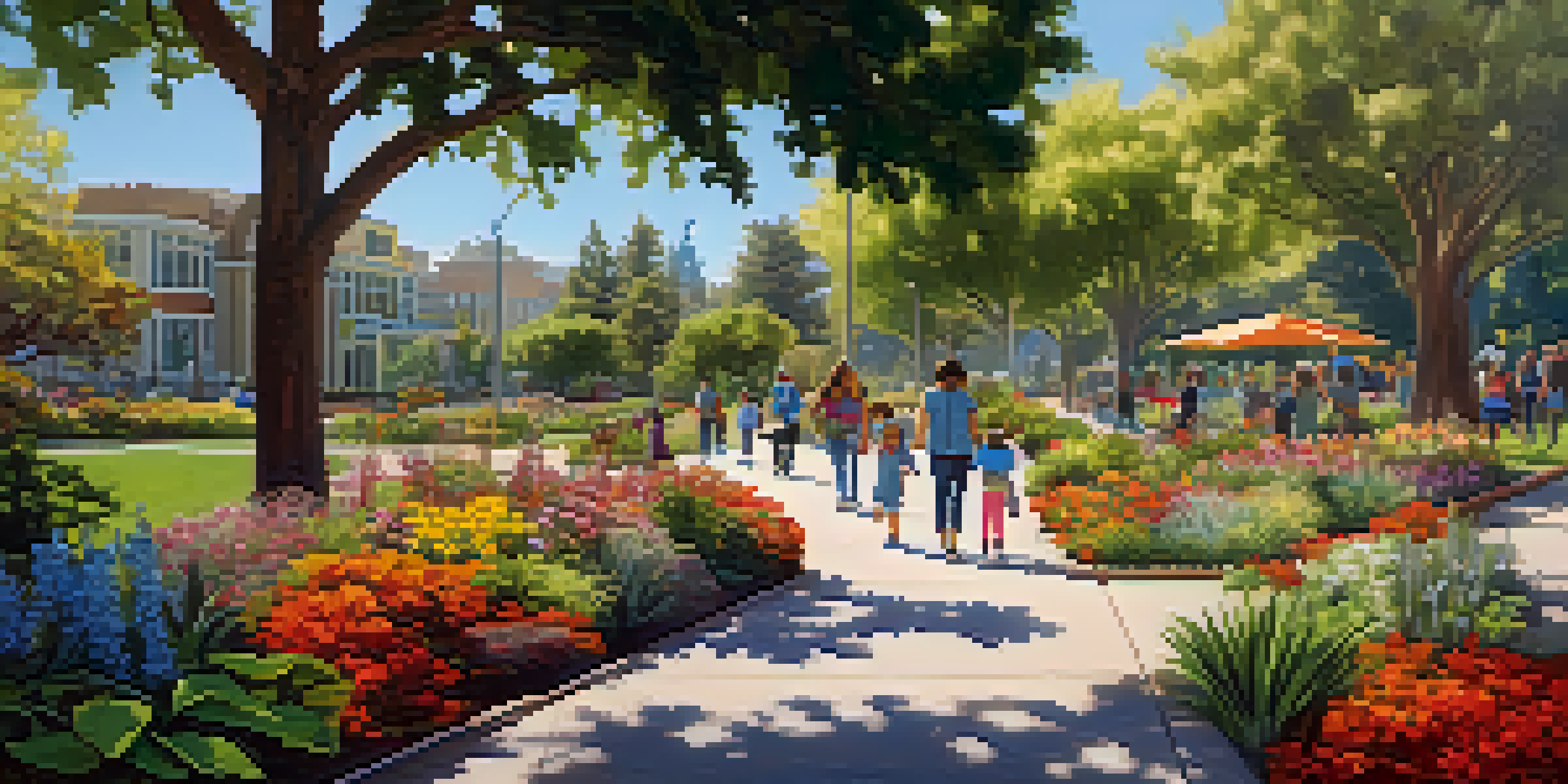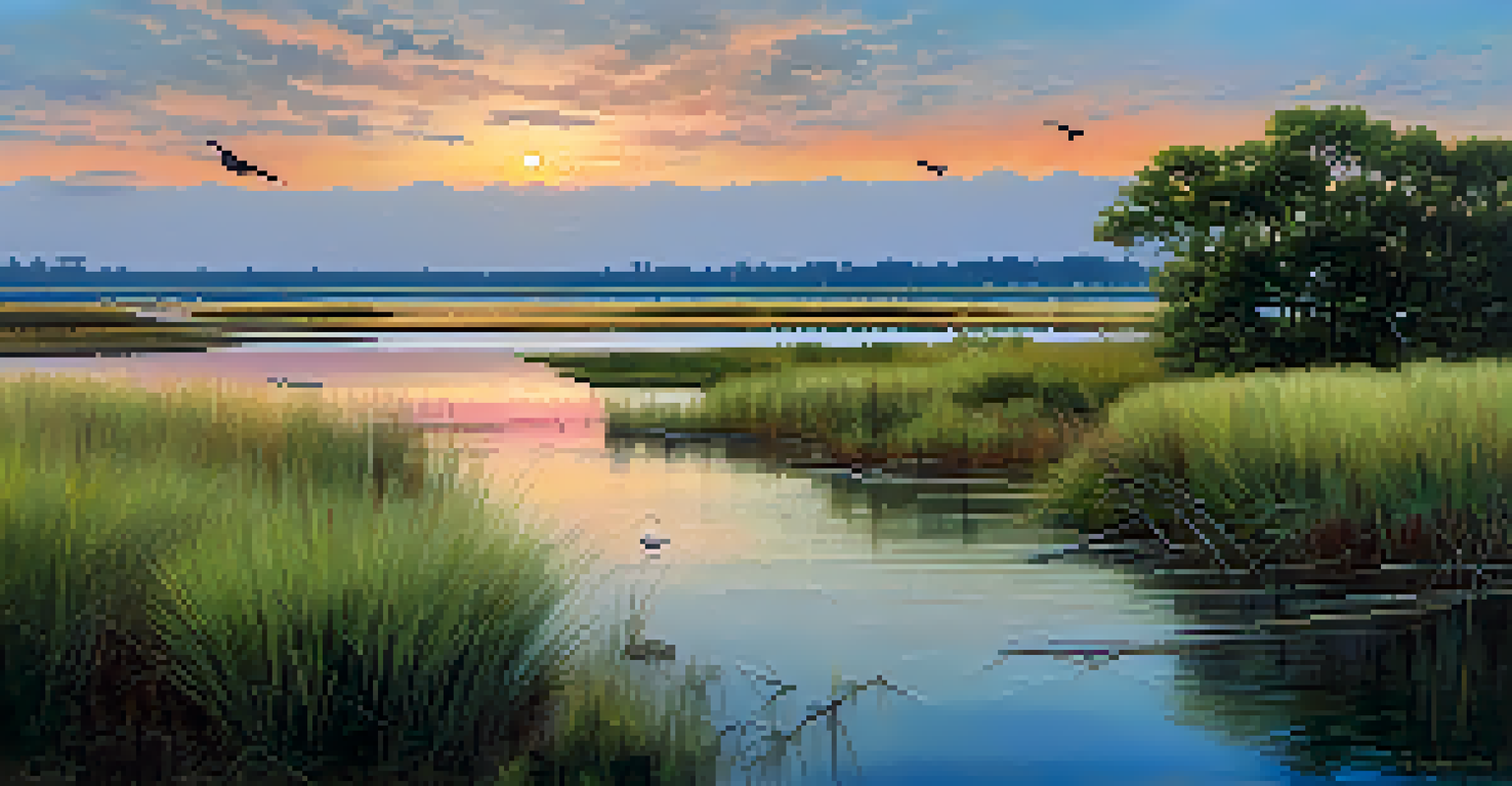Success Stories: Ecological Restoration in Redwood City

The Importance of Ecological Restoration in Urban Areas
Ecological restoration is crucial for revitalizing urban environments, especially in places like Redwood City. It helps restore native habitats and improve biodiversity, which are often compromised by urban development. By reintroducing native species, communities can create healthier ecosystems that benefit both wildlife and residents.
The environment is where we all meet; where we all have a mutual interest; it is the one thing all of us share.
In Redwood City, these efforts not only help restore the natural balance but also enhance the quality of life for its citizens. Parks and green spaces become more vibrant, attracting not just animals, but people looking to connect with nature. This connection fosters a sense of community and promotes environmental awareness.
Moreover, ecological restoration can mitigate urban issues like flooding and air pollution. By implementing green infrastructure, such as rain gardens and permeable pavements, the city can better manage stormwater and improve air quality, showcasing the multifaceted benefits of such initiatives.
Case Study: The Bair Island Restoration Project
One of the standout examples of ecological restoration in Redwood City is the Bair Island Restoration Project. This ambitious initiative focuses on restoring tidal marshes and enhancing wildlife habitats in the San Francisco Bay Area. The project's aim is to reestablish a thriving ecosystem that supports various species, including endangered ones.

Over the years, community volunteers have played a vital role in this restoration effort. From planting native vegetation to removing invasive species, these passionate individuals have made a significant impact. Their hard work not only helps restore the environment but also fosters a strong sense of stewardship among residents.
Ecological Restoration Benefits Urban Life
Restoring native habitats in urban areas like Redwood City enhances biodiversity and improves residents' quality of life.
The Bair Island project serves as a reminder that ecological restoration is a collaborative effort. By bringing together local organizations, government agencies, and dedicated volunteers, Redwood City has created a model for successful environmental initiatives that can inspire other urban areas.
Community Involvement: Engaging Residents in Restoration
Successful ecological restoration often hinges on community involvement, and Redwood City has embraced this concept wholeheartedly. Local organizations regularly host workshops and events to educate residents about the importance of native habitats and how they can contribute. By engaging the community, these initiatives become more than just projects—they evolve into shared missions.
The best time to plant a tree was twenty years ago. The second best time is now.
For instance, volunteer days are organized where families can come together to plant trees, clean up parks, and learn about local flora and fauna. These hands-on experiences not only beautify the city but also instill a sense of pride and ownership among residents. When people see the direct impact of their efforts, they are more likely to continue supporting restoration initiatives.
The ripple effect of community involvement is profound. As residents become more aware of their local ecosystems, they start advocating for sustainable practices in their daily lives, further enhancing the overall health of Redwood City.
The Role of Local Government in Restoration Efforts
Local government plays an essential role in driving ecological restoration projects forward. In Redwood City, city officials recognize the value of green spaces and actively support initiatives aimed at restoring and maintaining these areas. By allocating funds and resources, the government helps ensure that restoration projects are sustainable and effective.
Additionally, the city collaborates with environmental organizations to develop comprehensive restoration plans. These partnerships allow for a pooling of expertise, ensuring that projects are based on sound ecological principles. The result is a more integrated approach to urban planning that prioritizes sustainability.
Community Engagement Drives Success
Active involvement from local residents in restoration projects fosters a sense of ownership and promotes sustainable practices.
Moreover, local government efforts often extend beyond just funding. By promoting policies that protect natural habitats and encourage responsible development, Redwood City is setting a precedent for other cities to follow. This commitment to ecological restoration demonstrates that urban areas can thrive while respecting and enhancing their natural landscapes.
Success Stories: Restoring the Riparian Corridors
One notable success story in Redwood City's ecological restoration journey is the revitalization of riparian corridors along local waterways. These areas, which serve as buffers between land and water, are vital for maintaining biodiversity and preventing erosion. By restoring these corridors, the city has not only improved water quality but also provided essential habitats for wildlife.
The project involved planting native trees and shrubs, which help stabilize the banks and create a more diverse ecosystem. This effort has been particularly beneficial for local bird species, who now have safe nesting sites and ample food sources. The improvements have made these areas more enjoyable for residents as well, offering beautiful spots for recreation and relaxation.
By showcasing the success of riparian restoration, Redwood City highlights the tangible benefits such projects can bring to both nature and the community. This inspires further action and reinforces the idea that ecological restoration can yield positive outcomes for everyone involved.
Innovative Approaches: Green Infrastructure in Redwood City
Redwood City has embraced innovative approaches to ecological restoration through the implementation of green infrastructure. This concept involves using natural processes to manage stormwater and improve urban environments. By integrating features like bioswales, rain gardens, and green roofs, the city is enhancing its resilience to climate change while restoring natural ecosystems.
These green infrastructure projects not only manage water runoff effectively but also create new habitats for wildlife. For example, rain gardens filled with native plants can attract pollinators like bees and butterflies, contributing to the overall health of the ecosystem. Residents benefit from these initiatives as well, enjoying cleaner air and improved aesthetics in their neighborhoods.
Innovative Green Infrastructure Solutions
Redwood City's use of green infrastructure enhances resilience to climate change while creating habitats and improving urban aesthetics.
This forward-thinking approach to ecological restoration showcases how urban environments can coexist with nature. By prioritizing green infrastructure, Redwood City is setting a standard for sustainable urban planning that other cities can aspire to.
Future Directions: Continuing the Journey of Restoration
As we look to the future, Redwood City's commitment to ecological restoration remains strong. Ongoing projects and initiatives aim to build on the successes achieved thus far, focusing on areas that still need attention. This forward momentum is essential for creating a sustainable urban environment that harmonizes with nature.
Future directions for restoration efforts may include expanding community education programs, enhancing volunteer opportunities, and exploring new restoration techniques. By continuously adapting and evolving, Redwood City can address emerging environmental challenges while fostering a culture of stewardship among its residents.

Ultimately, the journey of ecological restoration is a collaborative one, requiring dedication and passion from all stakeholders involved. With a strong foundation already laid, Redwood City is well-positioned to continue its success in restoring the natural beauty and ecological health of the region.